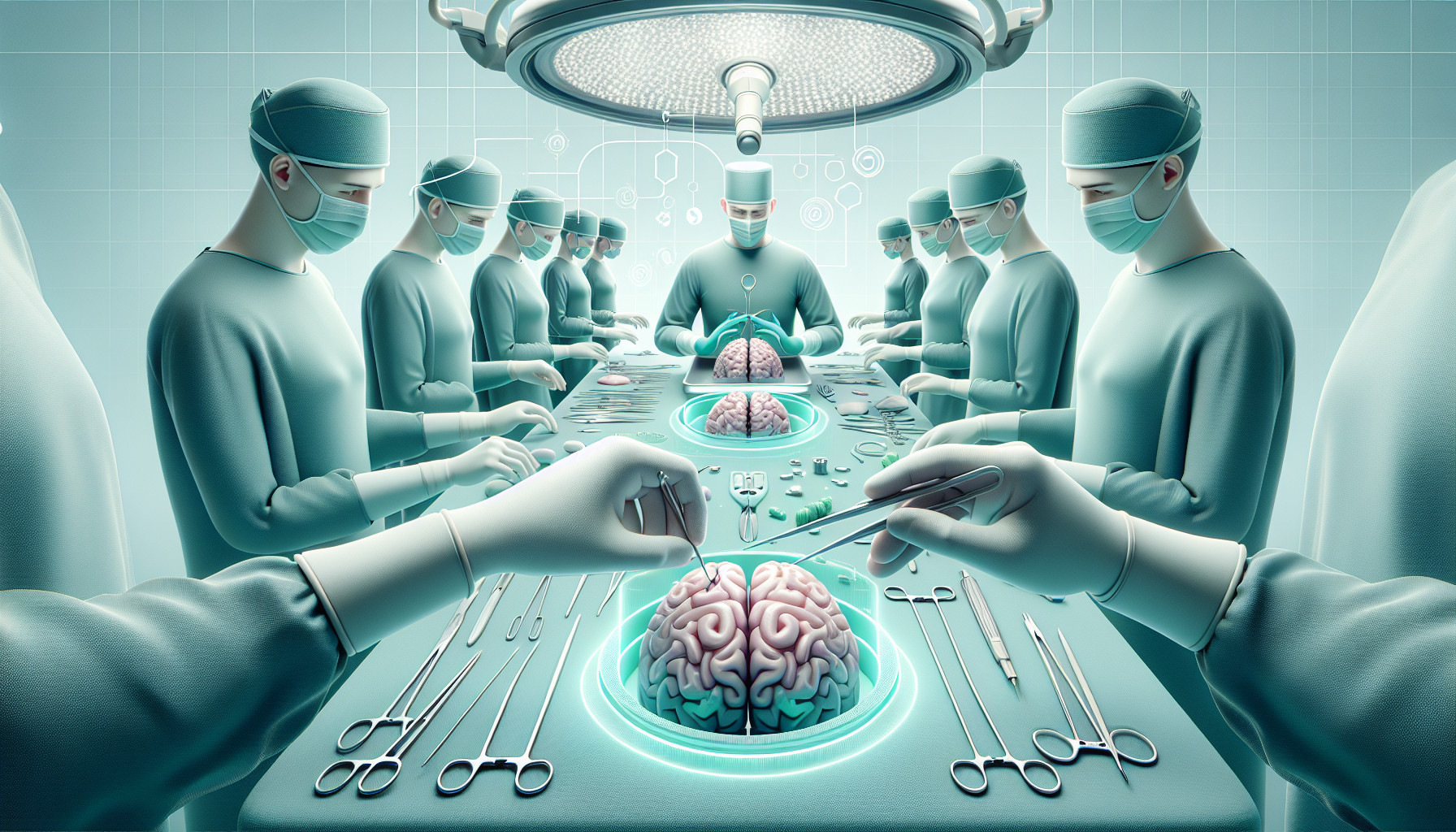Our Summary
This research paper discusses a new method to improve the accuracy of Deep Brain Stimulation (DBS) surgery for patients with advanced Parkinson’s disease. DBS is a neurosurgical procedure where a device is implanted in the brain to send electrical signals to specific parts that control movement. One of the main challenges during this procedure is accurately locating a small part of the brain called the subthalamic nucleus (STN) and its borders.
Traditionally, this task is performed manually by a neurophysiologist using microelectrode recordings (MERs), which is a complex and time-consuming process. However, this new method uses a technique called wavelet-packet to automatically identify the STN and its surrounding structures using MERs.
The study involved analyzing 2904 MERs from 26 Parkinson’s patients who had undergone DBS surgery. The researchers extracted statistical data from the recordings and used them to distinguish between the STN and areas before and after it. The results showed that the new method was able to identify the STN and its surrounding areas with an average accuracy of 85% for non-STN vs. STN, 87.2% for pre-STN vs. STN, and 77.7% for STN vs. post-STN.
The study concludes that this new method could potentially be a useful tool for quickly and accurately identifying the STN and its borders during DBS surgery. The technique was found to be more effective than the existing wavelet method.
FAQs
- What is the new method proposed in the research to improve the accuracy of Deep Brain Stimulation (DBS) surgery?
- How does the new method help in identifying the subthalamic nucleus (STN) and its borders during DBS surgery?
- How effective was the new method in identifying the STN and its surrounding areas compared to the traditional method?
Doctor’s Tip
A helpful tip a doctor might give a patient undergoing brain surgery is to follow all pre-operative instructions carefully, such as fasting before the surgery and avoiding certain medications that can increase the risk of bleeding. It is also important to communicate openly with the surgical team about any concerns or questions you may have before the procedure. Additionally, following post-operative care instructions, such as taking prescribed medications and attending follow-up appointments, is crucial for a successful recovery.
Suitable For
Patients who are typically recommended for brain surgery include those with tumors, epilepsy, Parkinson’s disease, essential tremor, dystonia, and other movement disorders. These patients may have tried other treatment options, such as medication or physical therapy, without success, and their symptoms may be significantly impacting their quality of life. Additionally, patients who have experienced traumatic brain injuries, aneurysms, or arteriovenous malformations may also be recommended for brain surgery to repair or remove the affected area. Ultimately, the decision to undergo brain surgery is made on a case-by-case basis by a team of neurosurgeons, neurologists, and other healthcare professionals based on the individual patient’s medical history, symptoms, and overall health.
Timeline
Before brain surgery:
- Patient is diagnosed with advanced Parkinson’s disease and is recommended for Deep Brain Stimulation (DBS) surgery.
- Patient undergoes pre-operative evaluations and tests to determine if they are a suitable candidate for surgery.
- Neurosurgeon discusses the risks and benefits of the surgery with the patient and obtains informed consent.
- Surgery date is scheduled and patient prepares for the procedure by following any pre-operative instructions given by the medical team.
During brain surgery:
- Patient is placed under general anesthesia and their head is secured in a fixed position.
- Surgeon makes an incision in the scalp and drills a small hole in the skull to access the brain.
- Electrodes are implanted in the brain and connected to a pulse generator device implanted under the skin near the collarbone.
- Surgeon uses microelectrode recordings (MERs) to locate the subthalamic nucleus (STN) and its borders to ensure accurate placement of the electrodes.
- Surgery typically lasts several hours and patient is closely monitored by the medical team throughout the procedure.
After brain surgery:
- Patient is taken to a recovery room where they are closely monitored for any complications.
- Patient may experience temporary side effects such as headache, nausea, or dizziness.
- Patient is discharged from the hospital after a few days and instructed on how to care for the incision site and manage any post-operative symptoms.
- Patient follows up with their medical team for regular check-ups and adjustments to the DBS device as needed.
- Patient may undergo physical therapy or rehabilitation to help improve movement and function after surgery.
What to Ask Your Doctor
Some questions a patient should ask their doctor about brain surgery include:
- What specific type of brain surgery is being recommended for my condition?
- What are the potential risks and complications associated with this surgery?
- How experienced is the surgeon in performing this type of procedure?
- What is the success rate of this surgery for patients with my condition?
- Will I need any additional tests or imaging studies before the surgery?
- What is the expected recovery time and rehabilitation process after the surgery?
- How long will I need to stay in the hospital after the surgery?
- Will I need any medications or therapy after the surgery?
- Are there any alternative treatment options to consider before proceeding with surgery?
- What are the long-term outcomes and potential benefits of this surgery for my condition?
Reference
Authors: Karthick PA, Wan KR, An Qi AS, Dauwels J, King NKK. Journal: J Neurosci Methods. 2020 Sep 1;343:108826. doi: 10.1016/j.jneumeth.2020.108826. Epub 2020 Jul 2. PMID: 32622981
